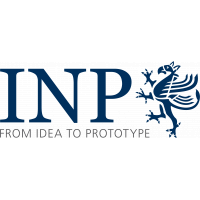A time-dependent, spatially one-dimensional fluid-Poisson model has been applied to analyse the impact of small amounts of tetramethylsilane (TMS) on the discharge characteristics of an atmospheric-pressure dielectric barrier discharge (DBD) in argon. Based on an established argon kinetics, it includes a reaction kinetics for TMS, which has been validated by measurements of the ignition voltage at the frequency f = 86.2 kHz for TMS amounts of up to 200 ppm. It is found that good agreement between measured and calculated ignition voltage can be obtained, when assuming that 25 % of the reactions of TMS with excited argon atoms with a rate coefficient of 3.0×10^{−16} m^3/s lead to the production of electrons due to Penning ionization. The dataset contains measured and calculated data for the ignition voltage and discharge current.
| Field | Value |
|---|---|
| Group | |
| Authors | |
| Release Date | 2020-08-12 |
| Identifier | 747f7a1e-861e-4329-a1bb-2695a58b3acb |
| Permanent Identifier (DOI) | |
| Permanent Identifier (URI) | |
| Is supplementing | |
| Plasma Source Name | |
| Plasma Source Application | |
| Plasma Source Specification | |
| Plasma Source Properties | Atmospheric-pressure DBD between plane steel mesh electrodes covered by dielectrics (borofloat glass, relative permittivity: 4.6); Electrode area: 8 cm^2; Thickness of dielectrics: 2 mm; Discharge gap: 1 mm; Voltage supply: sinusoidal voltage with variable amplitude and frequency of 86.2 kHz |
| Plasma Medium Name | |
| Plasma Medium Properties | Gas temperature: 300 K; Pressure: 1 atm; Gas mixture: Ar + 0 to 200 ppm TMS |
| Plasma Diagnostics Name | |
| Plasma Diagnostics Properties | Fluid-Poisson model: Voltage measurement: Current measurement: |
| Plasma Diagnostics Procedure | Fluid-Poisson model: Voltage measurement: Current measurement: |
| Language | English |
| License | |
| Public Access Level | Public |
| Contact Name | Loffhagen, Detlef |
| Contact Email |
Data and Resources
- Electrical characteristics of atmospheric-pressure DBD in argon with small admixtures of TMS - ignition voltagecsv
Ignition voltages U_i obtained by measurements and by modelling using...
Preview Download - Electrical characteristics of atmospheric-pressure DBD in argon with small admixtures of TMS - U,I model @ 10 ppm, period 20csv
Applied voltage U_a and calculated current vs. relative time for the 20th...
Preview Download - Electrical characteristics of atmospheric-pressure DBD in argon with small admixtures of TMS - U,I model @ 10 ppm, period 688csv
Applied voltage U_a and calculated current vs. relative time for the 688th...
Preview Download - Electrical characteristics of atmospheric-pressure DBD in argon with small admixtures of TMS - U,I experiment @ 10 ppmcsv
Applied voltage U_a and measured current vs. relative time for TMS fraction...
Preview Download - Electrical characteristics of atmospheric-pressure DBD in argon with small admixtures of TMS - U,I model @ 100 ppm, period 20csv
Applied voltage U_a and calculated current vs. relative time for the 20th...
Preview Download - Electrical characteristics of atmospheric-pressure DBD in argon with small admixtures of TMS - U,I model @ 100 ppm, period 688csv
Applied voltage U_a and calculated current vs. relative time for the 688th...
Preview Download - Electrical characteristics of atmospheric-pressure DBD in argon with small admixtures of TMS - U,I experiment @ 100 ppmcsv
Applied voltage U_a and measured current vs. relative time for TMS fraction...
Preview Download

![[Open Data]](https://assets.okfn.org/images/ok_buttons/od_80x15_blue.png)